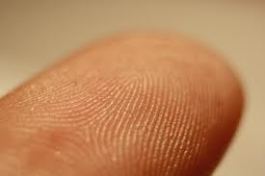As a result of our modern world, the law enforcement community has embraced new ways to catch criminals. These tactics have embraced the technological advances of our time, such as using social media to catch child predators and searching for stolen property on web posting boards. Perhaps the most dramatic of these tactics comes from terrorist recruiting. Identifying individuals who were lured through false web sites promoting Islamist believes and provided a means by investigators to carry out an attack on US soil. Yet unlike terrorism, recent mass shootings by crazed gunmen have gone largely ignored by proactive policing tactics. Albeit any incongruities, law enforcement’s inability to address mentally deranged individuals involved in mass shooting attacks has strained the public’s acceptance that little can done by law enforcement. Technically, the public is correct.
These incidents are normally classified as an ‘active shooter’ by the law enforcement community. Naturally, we remedy the problem in hindsight by applying deterring methods, often at an expense that cannot be sustained. Installing armed guards and establishing new protocols on security only wane over time as budget cuts and freedom of movement ease our memories from recent tragedies. Slowly, we are becoming an inevitable security state out of our own fear; and it is costly, not only to our wallets but also to our independent and free minded psyche. It is debatable on the proactive measures we can take, as Americans, without subverting our constitutionally protected rights.
Rather than knee jerk reactions, what the law enforcement community needs to examine is how to predict the possibility of an ‘active shooter’ event to occur in the first place. The predictability clearly falls in the category of local police intelligence units who have, until recently, focused on organized crime, gangs, and narcotics. These units are limited by their budget, technologies, systems, and their direction by the individual department and its’ leadership. They have done well in targeting individuals involved in criminal networks. However, a more comprehensive approach to intelligence is now needed. A possible solution has originated within the local ‘fusion centers’ that are now beginning to incorporate analysis into the multiple databases and research tools investigators currently employ.
State sponsored fusion centers are now being recognized as a central point of information sharing within the law enforcement network. Fusion centers by their very definition incorporate criminal intelligence from multiple sources that can be useful in determining cross jurisdictional linkages and how to best proceed in applying the criminal justice system. Much controversy has been made on the validity of fusion centers ranging from inaccurate reporting to violations of civil liberties. Before a comprehensive examination can be made, it would be best to look at how to properly correct deficiencies and prepare communities for proactive policing measures with improved fusion center models.
An immediate need at this time is to standardize fusion centers in terms of staffing and certification. Although a recent senate report indicated that DHS intended to conduct comprehensive assessments of fusion centers, none have been made.[1] Without knowing what indigenous problems exist at the ground level, it would be difficult to prepare the existing fusion center for a certification process.
One such example is the lack of staffing models for fusion centers.[2] This problem is currently left to states to administer on their individual basis with recommendations from DHS. At stake is that states may not recognize the importance of having positions and roles defined for intercommunications and how each role is integrated. Meaning, many administrative positions may be redundant as they are irrelevant to the overall collection of information. Conversely, other positions may be unfulfilled due to the dual tasking of individuals and a perceived lack of support for a position due to the frequency of duties. Also, without uniformity from DHS, these will be determined on a geographic rather than a systemic basis. Positions need to be uniformly applied so inter communication with other fusion centers is correctly applied and unhindered. Essentially states need standardization in the law enforcement industry but first, fusion centers must be connected universally in staffing.
Another critical area is the need for personnel to be certified in the position they occupy. This is especially true with reporting officers, who are either unqualified or lacks basic skills to perform critical thinking. These positions at DHS have historically been filled by military intelligence reporters, however, there is much disparity between military and criminal intelligence. One of the most significant findings in a congressional report is the lack of understanding of basic civil and constitutional rights of individuals by reporting officers. This is likely a direct association to the military absence on controls when it comes to respect of civil liberties in a wartime environment, as in recent conflicts in Afghanistan and Iraq.
An additional problem is the overarching objective of DHS and lack of understanding of different layers of intelligence. As indicated by Daryl Johnson, who authored a DHS report for LE regarding right wing extremists, much of the DHS directives pointed toward traditional jihadi terrorism. A singular focus. Another criticism Johnson makes is the overcautious nature of civil liberty lawyers that prohibited analysts from reviewing content found in social media websites. After Johnson’s right-wing extremists report (which was intended for LE only) the Civil Rights Office at DHS stopped all monitoring of all public extremist web sites. As Johnson said, “That’s taking a risk because nowadays before people attack things, they like to broadcast it to the world. They write manifestos. They post videos about what they’re going to do. To sit there and say that’s off-limits puts us in a vulnerable situation.”[3] This singular focus from DHS prevents the local fusion center from researching/evaluating different constructs of threats, to include the active shooter. The federal mindset has to change to allow fusion centers to address issues on their own level.
Also, there is often no correlation between criminal intelligence and suspicious behavior related to possible terrorism. This too is a result of a military mindset to be conditioned that every event is terrorist related. Eventually, the information flow becomes desensitizing to the reader and a lack of action will follow. When we realize that fusion centers are more than hubs for intelligence gathering on foreign borne threats, we can define separate and distinct levels of intelligence to react to all forms of threat activity.
Aside from the reporters of intelligence, we must examine criminal Intelligence analysts, who often lack any substantive training or certification. Recommendations were made by the National Criminal Intelligence Sharing Plan (NCISP) that the International Association of Law Enforcement Intelligence Analysts (IALEIA) standards on education, training and certification be applied. In reality states have done little to ensure this unilaterally as those constraints to budget and salary prohibit excess expenditures for positions not deemed critical. By and large, a fusion center criminal analyst is a job where you learn by doing and often that means it is an individual trait to improve on the product without guidance and/or instruction. This lack of standards comprises the validity of the information plugged into the analytical model, which is essential in producing reliable information. There is no national academy, comprehensive course, or certification requirement to prepare a criminal analyst to properly work in today’s fusion centers, whereby the standards of conduct and knowledge of integrated systems are defined.
Notwithstanding staffing criticism, the fusion centers utilize existing systems such as the National Data Exchange (N-Dex) and the Regional Informational Sharing Systems (RISS). These systems coordinate data using traditional Boolean logic. And although some local systems may seem archaic, when tied to user friendly Meta database systems like LexisNexis, they reveal other items of information from multiple sources with less time invested. Where these data mining systems fail is they cannot perform layering information nor link social associations to compute probability factors, which is the key to predictability. Much of the work can be done by simplistic algorithmic models, attaching numerical values to associations, locations, and events. Other more comprehensive work can be accomplished through the use of software such as i2Analyst Notebook or Palantir. These help draw from a reporting repository where associations can be made and come to statistical probabilities involving persons and events. One method used by military analysts is Calebology, which lays out rules for making statistical probabilities and link analysis.
Focus from the law enforcement community should be on the intelligence gathering concepts, tactics, and technologies used in this identification and prediction process. Similar to fighting international terrorists by our military counterparts, our fusion centers can develop quantitative models using specific intelligence. These include the use of Operations Research/System Analysis (ORSA) who utilizes analytical information to develop probability models.
Fusion centers would also benefit through the use of social network analysis and their associated program models. Professor Kathleen Carley, Ph D. at Carnegie-Mellon University has worked with the Center for Computational Analysis of Social and Organizational Systems (CASOS).[4] Her work in social networking has led to new possibilities within military intelligence models and can possibly lead to technologies put in play within law enforcement. All of which leads to the prediction of events, focused on internal threats, and thwarting the next ‘active shooter.’
Still most of us will argue that old fashioned gumshoe detective work is what normally ‘cracks’ the case. And without doubt, it will take the detective working the case to ensure all steps are followed to seek a proper and lawful conclusion. However, experienced investigators working as key personnel within fusion centers now need to determine best practices when combining multiple levels of intelligence, constitutional footing, and evidence. So often these investigations begin with a complaint, which can be solved without the use of multiple intelligence reports, analytical analysis, or sophisticated computer models. What the modern investigator needs to examine now is how other methods can be used proactively pursue undetected threats. The coalescence of information may seem Orwellian, but it may successfully prevent the next mass shooting while still protecting the 2nd Amendment of our citizens.
Time, policy, legislation, and funding will dictate these issues. All of which will succumb to public pressure on how to avert horrific scenes like in Aurora, Colorado; Newton, Massachusetts; and name your town here. During the interim, our law enforcement community, originating with DHS and DOJ grants, should begin their research and develop a course forward to uphold their duties….”to protect and serve”.
[1] United States Senate Permanent Subcommittee on Investigations, Committee on Homeland Security and Governmental Affairs, Carl Levin, Chairman; Tom Coburn, Ranking Minority Member; Federal Support for and Involvement in State and Local Fusion Centers; Majority and Minority Staff Report
[2] Fusion Center Guidelines; Developing and Sharing Information and Intelligence in a New Era; Guidelines for Establishing and Operating Fusion Centers at the Local, State, and Federal Levels; DHS & DOJ Joint publication; 2005.





